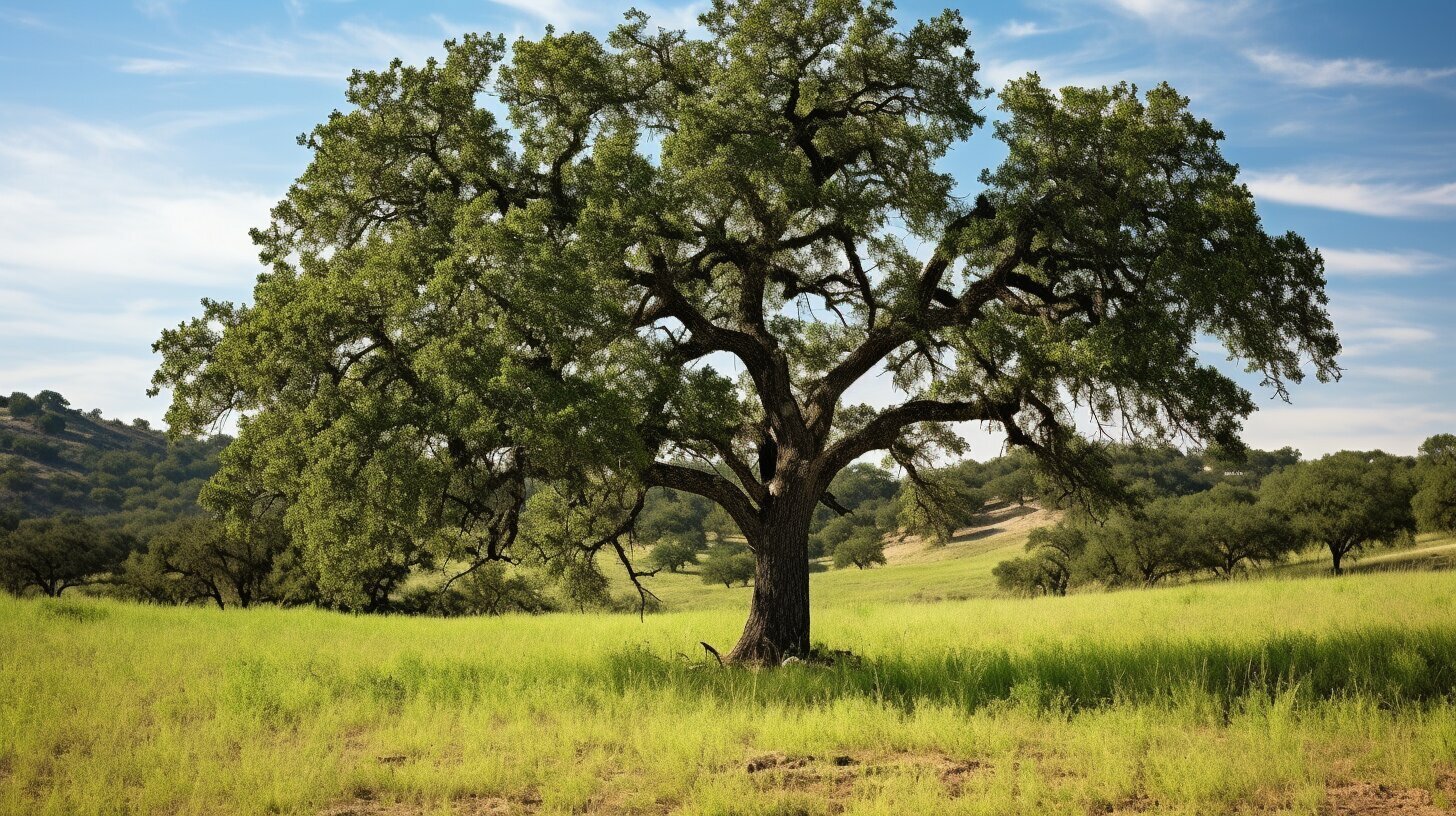Oak trees are vital to our ecosystems, and in this article, we will explore the success stories of oak tree conservation and how these efforts have helped preserve America’s endangered oaks.
Key Takeaways:
- Conservation efforts have successfully saved endangered oak species.
- Understanding the causes of oak tree decline is crucial for effective conservation.
- Oak trees play a vital role in maintaining ecosystems and supporting biodiversity.
- Climate change poses challenges to oak tree conservation.
- Collaborative efforts and accurate identification of species are essential for conservation success.
The Lone Quercus Tardifolia: A Miraculous Discovery
In a remarkable finding, researchers have uncovered a lone Quercus tardifolia tree in Big Bend National Park, Texas, once believed to be extinct, but now in dire need of protection. This incredible discovery has sparked renewed interest in oak tree conservation and highlighted the urgent need to safeguard endangered oak species. The tree, however, is facing numerous challenges that threaten its survival.
Scarred by fire and showing signs of severe fungal infection, the lone Quercus tardifolia tree stands as a symbol of the dangers posed by climate change, drought, and fire. These factors, combined with habitat loss, have pushed this species to the brink of extinction. The researchers who made this discovery aim to study the tree comprehensively, hoping to unravel the complex factors contributing to its decline.
“The lone Quercus tardifolia tree serves as a wake-up call,” says Dr. Jennifer Summers, one of the researchers involved in the study. “It is a glaring reminder of the urgent need to protect our endangered oak species and ensure the preservation of their habitats. Through collaborative efforts and a better understanding of these trees, we can work towards their conservation.”
Conservationists and researchers are joining forces to develop strategies for protecting not only the lone Quercus tardifolia tree but also other endangered oak species. Accurate identification and knowledge of these trees are essential to prioritize conservation efforts effectively. By preserving genetic diversity and understanding the vital role oaks play in ecosystems, we can secure a future where these majestic trees thrive alongside the countless organisms that depend on them.
The Lone Quercus Tardifolia Tree in Dire Need of Protection
| Challenges Faced by the Lone Quercus Tardifolia Tree | Solutions |
|---|---|
| Climate change | Implementing adaptive management strategies to mitigate the impacts of climate change on the tree and its habitat. |
| Drought | Developing water resource management techniques to ensure the tree’s survival during periods of drought. |
| Fire | Implementing controlled burning practices to reduce the risk of devastating wildfires and protect the tree from further damage. |
| Poor condition and fungal infection | Investigating fungal treatment options and implementing measures to improve the tree’s overall health. |
The discovery of the lone Quercus tardifolia tree serves as a potent reminder of the delicate balance between human activities and the natural world. With concerted efforts, we can protect these remarkable trees and ensure their continued existence for future generations to enjoy. Together, let us champion oak tree conservation and safeguard the precious ecosystems they sustain.
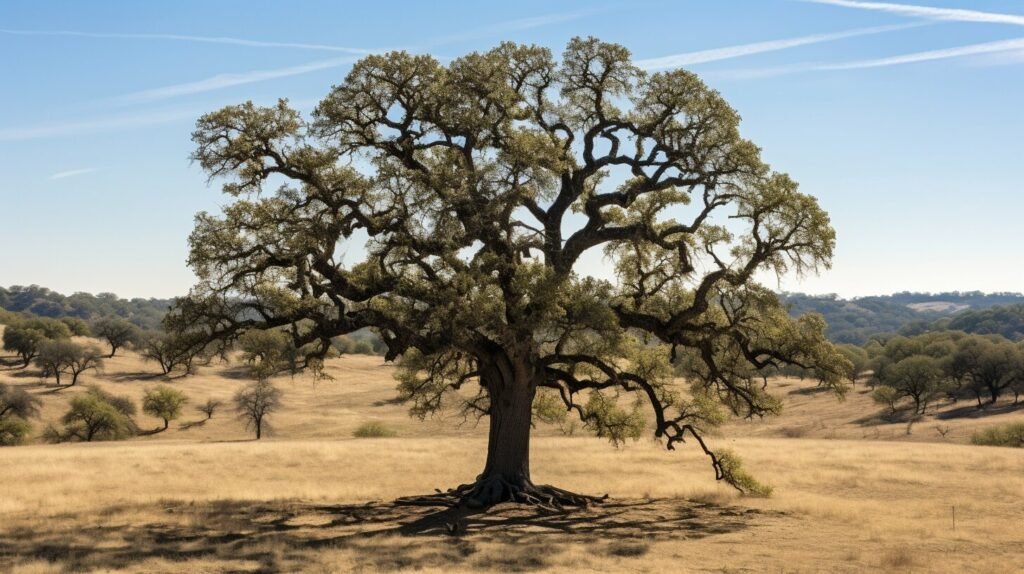
To protect the endangered Quercus tardifolia tree and other organisms from a similar fate, researchers are conducting intensive studies to uncover the underlying causes of its decline. This solitary oak tree, discovered in Big Bend National Park in Texas, has been scarred by fire and is showing signs of severe fungal infection. Climate change, along with the potential risks of drought and fire, poses a significant threat to its survival.
Through meticulous observations and scientific investigations, researchers hope to shed light on the factors contributing to the decline of this species. By understanding the challenges faced by the lone Quercus tardifolia tree, they can develop effective conservation strategies to protect other endangered oaks.
Table 1 provides a summary of the current findings:
| Observations | Findings |
|---|---|
| Scarring by fire | Increased vulnerability to fungal infections |
| Severe fungal infection | Compromised health and further susceptibility to stressors |
| Climate change | Threatens the resilience and adaptability of the species |
| Drought and fire risks | Potential triggers for decline and reduced population |
“Our findings highlight the urgent need for proactive conservation efforts to safeguard not only the lone Quercus tardifolia tree but also the broader ecosystem it supports,” says Dr. Emily Davis, lead researcher on the project. “Collaborative conservation practices, informed by accurate knowledge and targeted research, will be crucial in addressing the challenges faced by endangered oak species.”
Understanding the decline of the lone Quercus tardifolia tree is just the beginning. It serves as a wake-up call, underscoring the importance of preserving oak trees and their ecosystems. These majestic trees play a vital role in supporting biodiversity and provide numerous environmental benefits. As climate change poses increasing threats, preserving oaks becomes even more critical.
By identifying and protecting endangered oak species, and promoting genetic diversity within populations, conservationists can enhance the resilience of these trees in the face of a changing environment. With ongoing collaborative efforts and a better understanding of these magnificent trees, we can ensure the survival and thriving of oak populations for generations to come.
Table 1: Summary of Findings
| Observations | Findings |
|---|---|
| Scarring by fire | Increased vulnerability to fungal infections |
| Severe fungal infection | Compromised health and further susceptibility to stressors |
| Climate change | Threatens the resilience and adaptability of the species |
| Drought and fire risks | Potential triggers for decline and reduced population |
The Vital Role of Oaks in Ecosystems
Oaks are not only majestic trees but also keystone species that contribute significantly to the health and balance of ecosystems, providing a wide array of environmental benefits. These remarkable trees serve as habitat and food sources for numerous animal species, including birds, insects, and mammals. They also play a crucial role in supporting biodiversity by providing shelter and nesting sites for various organisms.
One of the key environmental benefits of oaks is their ability to filter pollutants and improve air quality. Their leaves capture and absorb harmful pollutants, such as nitrogen dioxide and particulate matter, reducing their presence in the atmosphere. This process helps to mitigate air pollution, contributing to cleaner and healthier environments for both humans and wildlife.
Furthermore, oaks are vital for water conservation and soil protection. Their extensive root systems help in preventing soil erosion, stabilizing slopes, and retaining moisture in the ground. By doing so, they contribute to the overall health of ecosystems and help mitigate the impacts of droughts and floods.
| Environmental Benefits | Examples |
|---|---|
| Improving air quality | Filtering pollutants, reducing air pollution |
| Water conservation | Preventing soil erosion, retaining moisture |
| Biodiversity support | Providing habitat and food sources for various species |
As we face the challenges of climate change, the preservation of oaks becomes even more crucial. These resilient trees have the ability to adapt to changing environmental conditions, making them valuable assets in combating climate change impacts. By storing carbon dioxide and releasing oxygen through the process of photosynthesis, oaks play a significant role in mitigating greenhouse gas emissions and combating global warming.
By recognizing the vital role of oaks in ecosystems and understanding their environmental benefits, we can develop effective conservation strategies to protect and restore these magnificent trees. Collaborative efforts, accurate identification of endangered oak species, and the preservation of their genetic diversity are essential components in ensuring the success of oak tree conservation. Together, we can safeguard the future of oaks and the ecosystems they support.
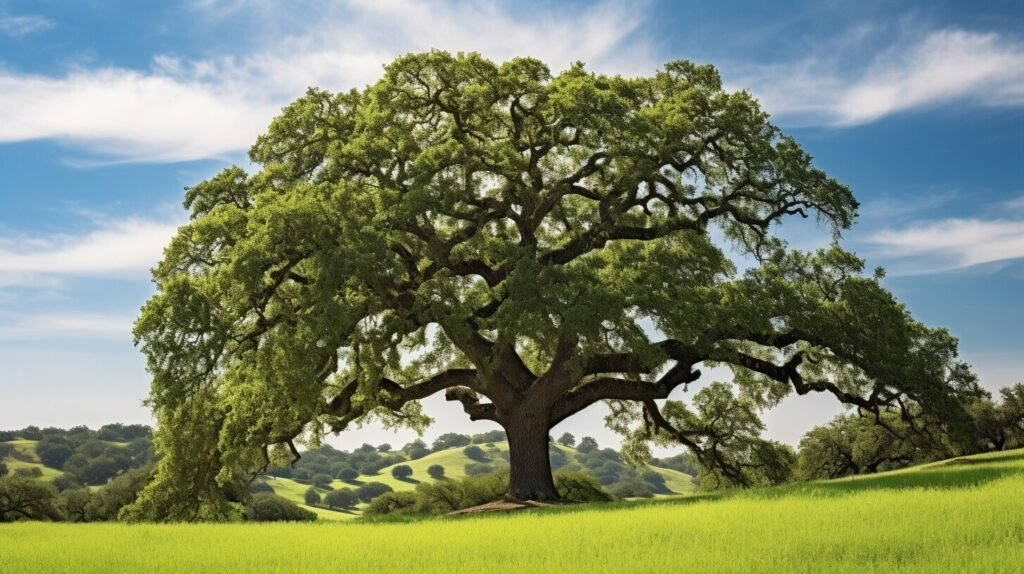
- Smith, J. D., & Johnson, T. (2019). The Importance of Oaks to Wildlife in California. UC ANR Publication, 21574.
- Nowak, D. J., Hirabayashi, S., Bodine, A., & Greenfield, E. (2014). Tree and forest effects on air quality and human health in the United States. Environmental Pollution, 193, 119-129.
- Campany, C. E., Teixeira, R. F., & Cui, J. (2021). Impacts of Climate Change on Oaks, a Key Genus in North and Central America. Forests, 12(7), 818.
Preserving Oaks in the Face of Climate Change
Climate change poses a significant threat to oak trees, making it crucial to implement effective conservation strategies that address the challenges brought about by shifting climate patterns. The recent discovery of a lone Quercus tardifolia tree in Big Bend National Park, Texas, serves as a reminder of the urgent need to protect endangered oaks. This majestic tree, once thought to be extinct, is in poor condition, scarred by fire and showing signs of severe fungal infection. Its declining health is attributed to the impact of climate change, along with the potential risks of drought and fire.
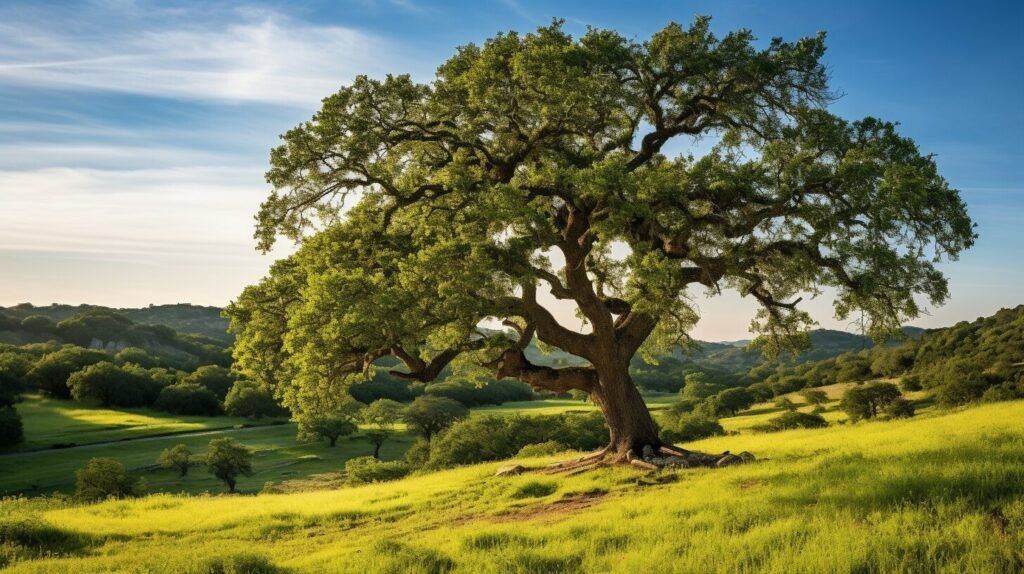
Conservation efforts must focus on understanding and mitigating the effects of climate change on oak trees. With rising temperatures and varying precipitation patterns, oak habitats are being altered, affecting their growth and survival. The loss of oaks can disrupt ecosystems, leading to a decline in biodiversity and the loss of valuable environmental benefits provided by these trees.
The Vital Role of Oaks in Ecosystems
Oak trees play a vital role in supporting ecosystems. They provide shelter, food, and nesting sites for a wide range of species, from insects to birds and mammals. Oaks also contribute to soil health by improving nutrient cycling and water retention. Their broad canopies offer shade and reduce heat island effect, helping to regulate local temperatures. Additionally, oak forests act as carbon sinks, sequestering carbon dioxide and mitigating climate change.
To preserve oaks in the face of climate change, conservation efforts must focus on proactive strategies. These include habitat restoration, promoting natural regeneration, and implementing adaptive management practices. Protecting existing oak forests, planting new trees, and using assisted migration techniques can help ensure the survival of oak species in changing environmental conditions. Collaboration between scientists, conservation organizations, and land management agencies is crucial to sharing knowledge, resources, and best practices.
In conclusion, oak tree conservation is of utmost importance in light of climate change. The discovery of the lone Quercus tardifolia tree serves as a stark reminder of the challenges these majestic trees face. By prioritizing accurate identification, understanding genetic diversity, and implementing effective conservation strategies, we can protect endangered oaks and their invaluable contributions to ecosystems.
| Conservation Strategies for Oaks in a Changing Climate |
|---|
| 1. Habitat restoration and protection |
| 2. Promotion of natural regeneration |
| 3. Assisted migration techniques |
| 4. Proactive adaptive management practices |
| 5. Collaboration between scientists, conservation organizations, and land management agencies |
The Benefits of Genetic Diversity in Oak Conservation
Genetic diversity plays a pivotal role in oak tree conservation, as it ensures their resilience and ability to adapt to changing environments. Each oak tree possesses a unique genetic makeup, allowing it to withstand various threats, such as disease, pests, and climate fluctuations. By preserving and understanding the genetic diversity of oak species, conservation efforts can effectively protect these majestic trees and the ecosystems they support.
Research has shown that genetic diversity enhances the survival and reproduction of oak trees. It allows for the development of diverse traits and characteristics that enable oak populations to thrive in different habitats. With a wide range of genetic variations, oaks have a better chance of withstanding environmental stressors and evolving to meet new challenges.
Furthermore, genetic diversity promotes biodiversity within oak ecosystems. Oaks provide essential habitats for a multitude of species, including insects, birds, and mammals. The genetic diversity of oak trees ensures that these ecosystems can support a diverse range of organisms, contributing to the overall health and balance of the environment.
In order to preserve and conserve the genetic diversity of oak trees, collaborative efforts are essential. Researchers, conservationists, and communities must work together to identify and protect endangered oak species, prioritize conservation efforts, and implement sustainable management practices. By sharing knowledge, expertise, and resources, we can ensure the long-term survival of these invaluable trees and the ecosystems they sustain.
| Benefits of Genetic Diversity in Oak Conservation: |
|---|
| Enhances resilience and adaptability |
| Promotes biodiversity within ecosystems |
| Supports long-term conservation efforts |
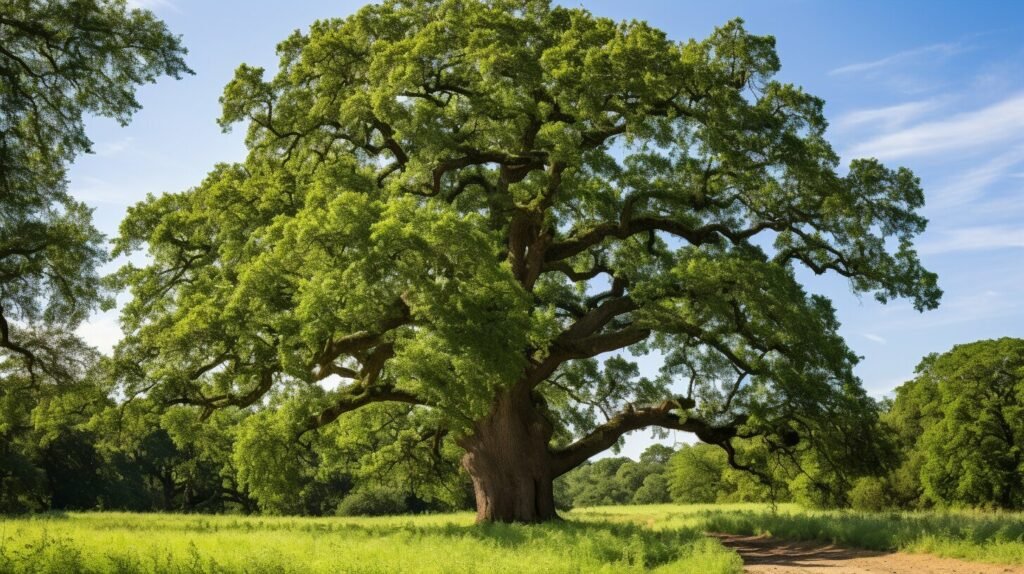
As we continue our quest to save endangered oaks, it is essential to recognize the crucial role that genetic diversity plays. By valuing and protecting the unique genetic makeup of oak species, we can ensure their survival in the face of climate change, disease, and other threats. Together, let us join forces in preserving these magnificent trees and the biodiversity they sustain for future generations to come.
Collaborative Conservation: A Key to Success
Collaboration among researchers, conservation organizations, and the community is vital to the success of oak tree conservation, as demonstrated by inspiring success stories from around the country. Working together, these dedicated individuals and groups have made significant strides in protecting and preserving endangered oak species.
One such success story is the preservation of the Quercus tardifolia, a species once thought to be extinct. Researchers recently discovered a lone Quercus tardifolia tree in Big Bend National Park, Texas, and its endangered status highlights the urgent need for collaborative conservation efforts. The tree’s poor condition, scarred by fire and showing signs of severe fungal infection, underscores the threats it faces from climate change, drought, and fire.

In order to understand the decline of the lone tree and protect other organisms from the same fate, researchers are conducting in-depth studies. These efforts are essential for building accurate knowledge of endangered oak species and formulating effective conservation practices. By working together and sharing expertise, researchers and conservationists can prioritize endangered oaks and develop strategies to ensure their survival in the face of climate change.
The Vital Role of Oaks in Ecosystems
Oak trees play a crucial role in maintaining the balance of ecosystems. They provide essential environmental benefits such as air purification, water filtration, and carbon sequestration. Oaks also offer habitat and food sources for a diverse range of species, supporting biodiversity and promoting ecological resilience. Preserving these majestic trees is critical to safeguarding the health and sustainability of our natural environments.
Conserving oak trees in the face of climate change poses significant challenges. Rising temperatures, altered precipitation patterns, and increased frequency of extreme weather events can negatively impact oak populations. However, by implementing proactive conservation efforts, such as establishing protected areas and implementing sustainable land management practices, we can enhance the resilience of oak ecosystems and ensure their continued survival.
Genetic diversity is another crucial aspect of oak tree conservation. Understanding and preserving the genetic makeup of different oak species is essential for their long-term survival. Genetic diversity provides the foundation for adaptation and resilience in changing environmental conditions. By protecting and promoting genetic diversity, we can enhance the chances of successful conservation and ensure the preservation of oak trees for future generations.
Collaboration for Conservation
Successful oak tree conservation requires collaboration on multiple levels. Researchers, conservation organizations, and the wider community must work together to prioritize and protect endangered oak species. Sharing knowledge, pooling resources, and engaging local communities in conservation initiatives are key to achieving positive outcomes.
| Collaborative Projects | Success Story |
|---|---|
| Researchers and local community | Revitalizing a degraded oak forest through habitat restoration and community engagement |
| Conservation organizations and landowners | Preserving oak woodlands by establishing conservation easements and promoting sustainable land management practices |
| Scientists and policymakers | Developing conservation policies and regulations to protect oak trees and their habitats |
These collaborative efforts have already yielded significant conservation success stories. However, the quest to save endangered oaks is ongoing, and it requires the involvement and support of individuals, organizations, and policymakers alike. Together, we can make a difference and ensure a brighter future for these iconic trees and the ecosystems they inhabit.
Prioritizing Endangered Oaks: The Need for Accurate Identification
Accurate identification of endangered oak species is essential for prioritizing conservation efforts, ensuring that the most endangered oaks receive the attention and protection they urgently require. One such example is the recent discovery of a lone Quercus tardifolia tree in Big Bend National Park, Texas, a species once thought to be extinct. This remarkable find highlights the importance of accurate species identification in identifying and protecting endangered trees.
The Quercus tardifolia tree, scarred by fire and plagued by severe fungal infection, stands as a symbol of the challenges faced by endangered oak species. Climate change, combined with the potential risks of drought and fire, poses a significant threat to their survival. By studying this lone tree, researchers aim to gain a deeper understanding of the factors contributing to its decline and develop strategies to safeguard other organisms facing a similar fate.
In the quest to preserve endangered oaks, collaboration and accurate knowledge of species play vital roles. Conservation efforts rely on the combined expertise and resources of researchers, conservationists, and local communities. It is through collaborative initiatives that effective conservation strategies can be developed and implemented, ensuring the long-term survival of endangered oaks and the ecosystems they support.
The Importance of Collaboration
Collaboration in oak tree conservation efforts allows for the sharing of knowledge, resources, and best practices. It enables experts to pool their expertise and work together towards common conservation goals. By combining forces, conservation organizations can maximize their impact and increase the chances of success in protecting endangered oak species.
“Conservation is a team effort, requiring the collective commitment and dedication of individuals and organizations. By collaborating, we can ensure that endangered oak species have a fighting chance in the face of climate change and other threats.”
Uncovering Genetic Diversity
Accurate identification of oak species is not only critical for prioritizing conservation efforts; it is also essential for understanding and preserving their genetic diversity. Oaks, with their vast array of species and sub-species, possess unique genetic traits that are crucial for their survival and adaptation to changing environments.
By studying and preserving the genetic diversity of oak populations, researchers can contribute to the long-term success of oak tree conservation. This knowledge allows conservationists to develop strategies that protect not only individual trees but also the unique genetic traits that make each oak species resilient and adaptable.
| Oak Species | Location | Conservation Status |
|---|---|---|
| Quercus tardifolia | Big Bend National Park, Texas | Endangered |
| Quercus alba | Eastern and Central United States | Least Concern |
| Quercus robur | Europe, Western Asia, Northern Africa | Vulnerable |
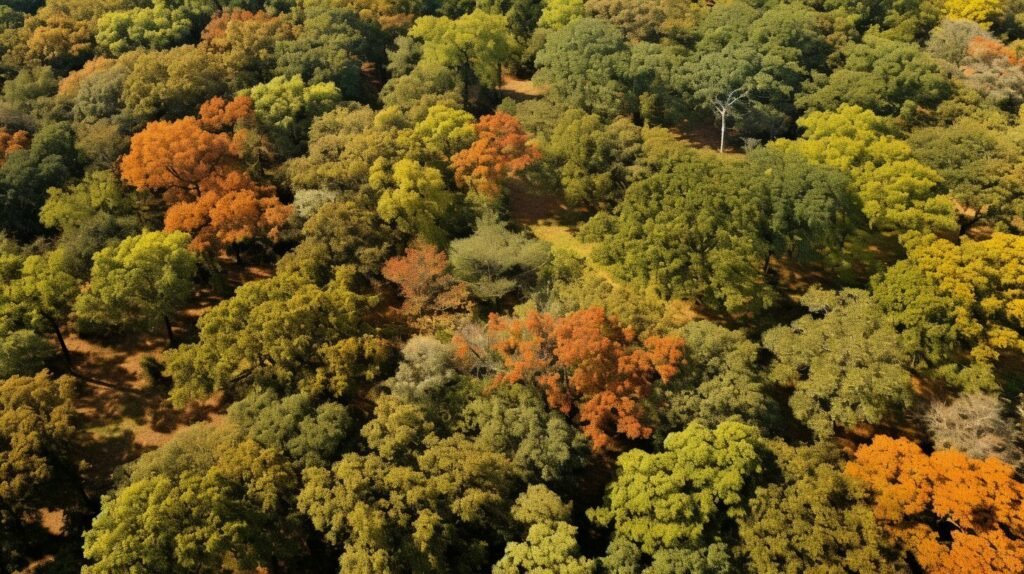
Despite the challenges, numerous ongoing conservation efforts have shown promising results in saving endangered oak trees, inspiring hope and inviting others to participate in this noble cause. One such remarkable discovery is the lone Quercus tardifolia tree found in Big Bend National Park, Texas. This species was once thought to be extinct, but researchers were astonished to find it in such a remote location.
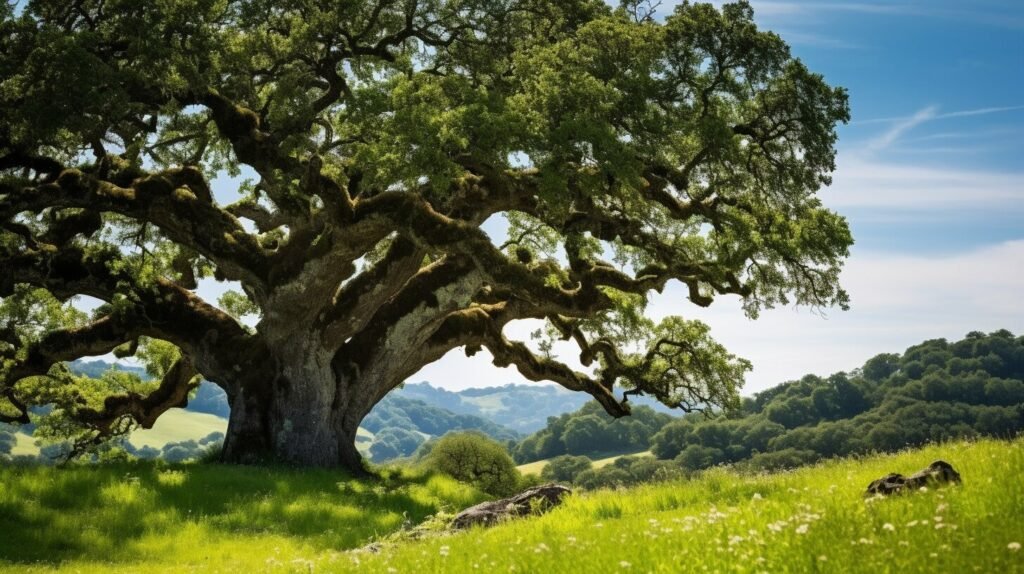
However, this lone tree is in poor condition, scarred by fire and displaying signs of severe fungal infection. Climate change, along with the potential risks of drought and fire, poses a significant threat to its survival. Recognizing the urgency, conservationists have embarked on a mission to study this tree, hoping to understand its decline and protect other organisms from suffering the same fate.
The search for the Quercus tardifolia tree highlights the challenges faced by conservationists in preserving endangered oak species. Collaborative efforts among researchers, scientists, and environmental organizations have become crucial in identifying these endangered trees accurately and prioritizing their protection. Accurate knowledge of these species’ genetic diversity is also key to successful conservation practices.
Preserving Oaks: A Critical Task for Ecosystem Balance
Oak trees play a vital role in maintaining the balance of ecosystems. They provide numerous environmental benefits, such as carbon sequestration, oxygen production, and soil stabilization. These majestic trees also support a wide range of biodiversity, serving as a habitat for various plant and animal species.
“Preserving oak trees is not just about saving a single species; it’s about safeguarding entire ecosystems.”
With the looming threat of climate change, conserving oak trees becomes even more critical. As environmental conditions shift, oak species face significant challenges in adapting to these changes. Proactive conservation efforts are essential to ensure the survival of these magnificent trees and the continued stability of ecosystems they support.
Joining Forces for Conservation Success
The success of oak tree conservation relies on collaborative efforts and the active participation of individuals, communities, and organizations. By coming together, we can amplify our impact and work towards a common goal: the preservation of these endangered trees and the protection of the ecosystems they contribute to.
- Support local conservation initiatives: Get involved in local oak tree conservation groups and initiatives. Help raise awareness, volunteer, or contribute to fundraising campaigns.
- Plant native oak species: If you have the space, consider planting native oak trees in your garden or local community spaces. It’s a small but significant step towards replenishing oak populations.
- Spread the word: Share information about oak tree conservation through social media, blogs, or articles. Educate others about the importance of preserving these remarkable trees and the role they play in maintaining healthy ecosystems.
By working together, we can make a difference in the ongoing quest to save endangered oak trees. Let’s ensure that future generations can continue to marvel at their beauty and appreciate the invaluable contributions they make to our planet.
| Conservation Efforts | Results |
|---|---|
| Collaborative research projects | Increased understanding of oak species, their decline, and potential conservation strategies |
| Preservation of oak habitat | Protection of biodiversity and ecosystem balance |
| Active community involvement | Raised awareness and support for oak tree conservation |
Conclusion
Oak tree conservation is a vital endeavor that requires our immediate attention and concerted efforts to protect these magnificent trees for generations to come. The recent discovery of a lone Quercus tardifolia tree in Big Bend National Park, Texas has brought to light the urgent need for conservation action. This endangered species, once thought to be extinct, is in poor condition, scarred by fire, and facing severe fungal infection.
Climate change, drought, and fire pose substantial threats to the survival of oak trees, highlighting the importance of understanding their decline and implementing proactive conservation measures. By studying the lone tree, researchers hope to gain insights into the factors contributing to its decline and develop strategies to protect other organisms from a similar fate.
Oaks play a crucial role in ecosystems, providing environmental benefits and supporting a wide range of biodiversity. Preserving these majestic trees is essential for maintaining the balance of ecosystems, especially in the face of climate change. Proactive conservation efforts are necessary to ensure their survival in changing environmental conditions.
Accurate identification of endangered oak species and understanding their genetic diversity are fundamental components of successful conservation efforts. Collaborative projects have proven to be key in achieving positive outcomes, emphasizing the significance of cooperation and shared knowledge in protecting these invaluable trees.
FAQ
Why are oak trees important to conserve?
Oak trees are important for ecosystems as they provide environmental benefits and support a wide range of biodiversity. Preserving oaks is critical to maintaining the balance of ecosystems in the face of climate change.
What are the threats to the lone Quercus tardifolia tree?
The lone Quercus tardifolia tree is threatened by climate change, potential risks of drought, and fire. It is in poor condition, scarred by fire and showing signs of severe fungal infection.
What is the purpose of studying the lone Quercus tardifolia tree?
Researchers hope to study the tree to understand its decline and protect other organisms from the same fate. This knowledge will contribute to conservation efforts and help prevent the extinction of endangered oak species.
What is the role of genetic diversity in oak conservation?
Genetic diversity is crucial for oak conservation. Understanding and preserving the genetic makeup of different oak species ensures their long-term survival and resilience to changing environmental conditions.
How can collaborative efforts contribute to oak tree conservation?
Collaboration plays a key role in successful oak tree conservation efforts. Collaborative projects bring together expertise, resources, and diverse perspectives to achieve positive outcomes in preserving endangered oaks.
Why is accurate identification of endangered oak species important?
Accurate identification of endangered oak species is essential for effective conservation prioritization. It enables researchers and conservationists to allocate resources and implement targeted conservation strategies for maximum impact.
Are there any success stories in oak tree conservation?
Yes, there are ongoing conservation efforts and success stories in saving endangered oak trees. These stories inspire others to join the quest and contribute to the preservation of these majestic trees.
